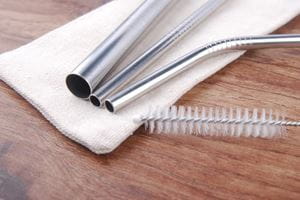Have you ever kept a loaf of bread just a little too long? Colorful and fuzzy doesn’t always equal cute, does it? That’s especially true when it comes to mold in your home. Unfortunately, the places where mold loves to grow aren’t always so obvious. Let’s take a look at some unexpected places you could find mold lurking.
In the kitchen
Part of the rise in household mold comes from the desire to “go green,” which is a great goal—as long as you aren’t also going blue and black and fuzzy at the same time. Reusable items that are repeatedly exposed to moisture are prime spots for mold to grow, including straws, water bottles, sippy cups and coffee filters.
To clean plastic straws, cups and bottles, use hot water and dish soap, and be sure to use a clean bottle brush or pipe cleaner to get inside and around any small crevices. Sippy cup valves and other small parts will benefit from a long soak in hot, soapy water or diluted white vinegar. For metal items, fill with boiling water and leave to soak for several hours; then, wash with hot water and soap. You can also use denture tablets for extra cleaning power.
In the bathroom
While it’s probably okay to use your bath towel two or three times between washings, keep in mind that even clean skin will shed cells onto the damp towel, leaving behind a breeding ground for fungus. Make sure you hang towels to dry between showers, with no folds or creases to trap moisture.
Toothbrushes can harbor all sorts of nasty germs—and then we put them back into our mouths! To prevent mold growth, store your toothbrush somewhere that gets plenty of air flow to dry out between uses. Once a week or so, after rinsing your brush with water, dunk it in some alcohol-based mouthwash for a minute or two, and then rinse again.
Household appliances
Refrigerators have lots of mold-friendly areas, including the drip pan and water dispenser—not to mention the shelves! To clean the inside of your fridge, mix one-half cup bleach with a gallon of warm water, and use a rag to wipe down all surfaces. Then, make sure you dry everything completely before closing the door. Empty and sanitize drip pans at least monthly, and wipe down ice and water dispensers once a week with equal parts white vinegar and water.
To clean your dishwasher, fill a dishwasher-safe container with one cup of white vinegar, put it on the top rack, and run a hot-water heavy-cleaning cycle.
A washing machine can be cleaned and sanitized by pouring one-half cup of bleach into the washer (or into the bleach dispenser) and then running a hot-water cycle. You may want to add an extra rinse to make sure all the bleach is flushed out.




